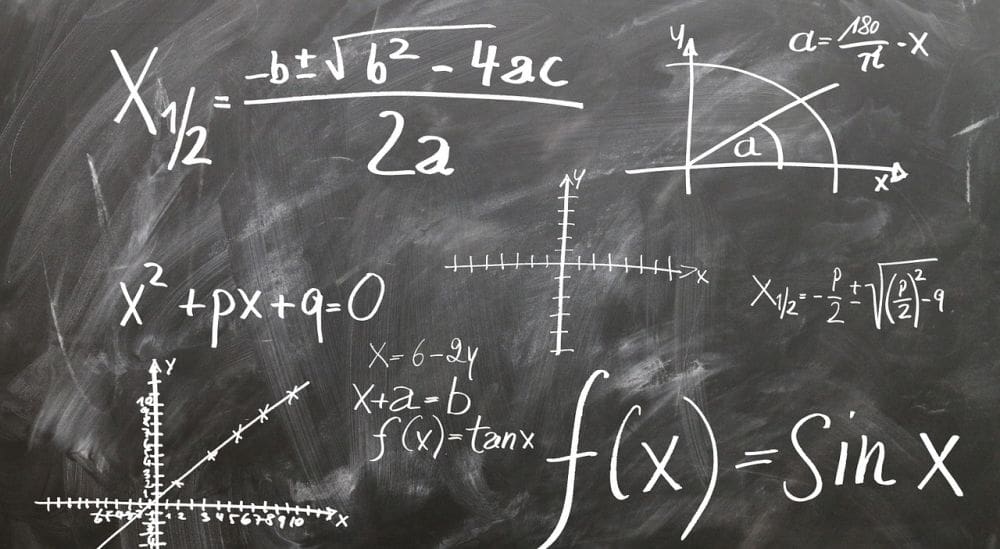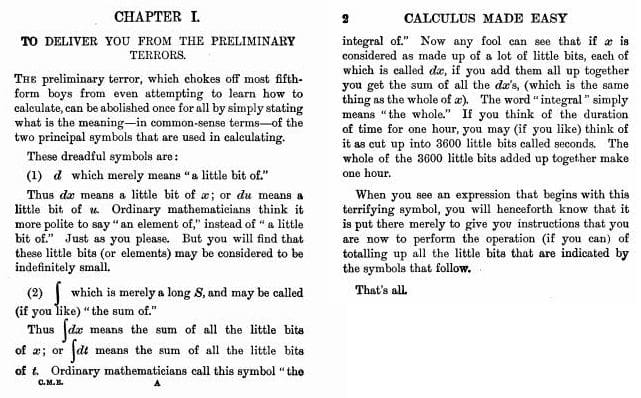
How to Learn Math for Machine Learning
So how much math do you need to know in order to work in the data science industry? The answer: Not as much as you think.

Image by geralt on Pixabay
One of the most common questions that data science aspirants have is "how much math do I need to know for machine learning?" Students looking to break into machine learning often see math as a huge barrier to entry.
Gatekeepers in the industry don’t help with this concern, labelling students as unqualified unless they have a Master’s degree of PhD in the subject.
So how much math do you need to know in order to work in the data science industry?
The answer: Not as much as you think.
Most companies solve very similar use cases with the help of data. They require data scientists to build machine learning models that can predict customer churn, perform segmentation, and forecast sales.
The approach used to tackle these problems are similar, and the task becomes fairly repetitive. There is no need to reinvent the wheel, and they use out-of-the-box ML algorithms.
Even if a situation arises where you need to build a custom machine learning model, an intuitive understanding of specific topics are enough. You don’t need to go to deep, and definitely don’t need to be an expert at math to become a data scientist.
For example, we know that gradient descent is used to find the line of best fit in linear regression. You don’t need to start learning how to solve differential equations, you simply need to understand the principles of calculus to get an idea of how this is done.
Similarly, if you were to build a neural network with Tensorflow — you need to perform a lot of matrix manipulation, but you will be doing this with the help of a computer program. Due to this, you don’t need to go back and practice solving algebraic equations. You just need to understand how they work.
In this article, I will point you towards resources that will help you get started with learning math for data science. I will focus on three areas — linear algebra, calculus, and statistics.
Linear Algebra
Linear Algebra — Foundations to Frontiers: This course on edX will teach you linear algebra at an undergraduate level. It starts off at a slow space, and you will be able to take this course as long as you have high-school level math knowledge.
The best part about this course is that it teaches you linear algebra with practical examples in Matlab, which makes you look at the subject through the lens of algorithms and programming. This learning approach is especially useful if your goal is to learn linear algebra for machine learning.
This course can be audited for free. If you’d like to get a certificate of completion, you can apply for financial aid.
3Blue1Brown — Essence of Linear Algebra: I haven’t taken this course before, but have come across it many times during my own quest for math learning resources.
Many machine learning aspirants swear by this course, since it provides learners with a conceptual understanding of linear algebra. Rather than learning arbitrary formulas or working to derive them mechanically, you will gain an intuition into how linear algebra works. This is very helpful if your end goal is to apply these concepts to machine learning models.
Calculus
There are two courses I recommend for learning calculus for machine learning. The Essence of Calculus is a great introductory calculus course by 3Blue1Brown. Again, this will provide you with an intuitive understanding of calculus concepts, and goes deeper to explain the significance behind formulas rather than just getting you to memorize them.
Next, you can take 3Blue1Brown’s Neural Network series. If you know how to implement neural networks using libraries like Keras, but don’t really understand the working behind these models, you should take this course. It provides you with a comprehensive explanation of the gradient descent algorithm, along with the calculus concepts behind it.

Calculus Made Easy 2nd ed, 1914, Chapter 1 (edited by article author to remove non-inclusive language).
Statistics
Probability and Statistics: To p or not to p? — Coursera
This is one of the best introductory statistics courses I’ve ever taken, and is offered by University of London. This course is catered towards students majoring in non-math heavy subjects, such as business and finance.
Due to this, statistical concepts are explained in a manner that is simple and easy to understand, with many real-world examples.
After taking this course, you will have an understanding of descriptive and inferential statistics, the different sampling distributions, sampling techniques, confidence intervals, and how p-values are calculated.
All of these concepts have direct application to real-world data analysis.
This is another excellent course to learn the intuition behind machine learning models.
Like the other resources in this list, this course is less focused on mathematical formulas, and explains machine learning models in a conceptual way.
To take this course, however, it is recommended to have some calculus knowledge, since the instructors tend to use notation that might confuse you otherwise.
You will learn concepts like linear and logistic regression, along with regularization techniques like ridge and lasso regression and when to use them. There is an entire lecture dedicated to techniques used to mitigate overfitting, and the underlying mathematical intuition behind them is explained.
This is one of the most helpful courses I’ve ever taken, since it helped me to stop treating machine learning models as black boxes. I gained an understanding of where different types of models should be used, when dimensionality reduction should be applied, and when to perform different kinds of feature selection techniques.
I’ve spent a lot of time trying to go back and learn undergraduate level calculus and linear algebra. However, despite spending a lot of time learning formulas and solving differential equations, there was a disconnect in my knowledge, since I never quite understood how these concepts related to machine learning algorithms.
The resources above are a great way to break through that barrier, as they provide you with a conceptual understanding of the math behind machine learning rather than taking you down the rabbit hole of complex formulas and theorems.
Natassha Selvaraj is a self-taught data scientist with a passion for writing. You can connect with her on LinkedIn.
